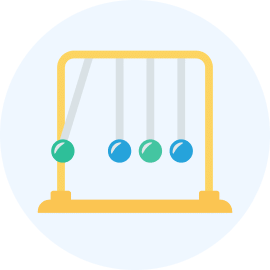Grade 12 Exam > Grade 12 Notes > Computer Science for Grade 12 > Detailed Notes: Functions
Detailed Notes: Functions | Computer Science for Grade 12 PDF Download
| Download, print and study this document offline |
Please wait while the PDF view is loading
Page 2 Introduction ? Large programs are often difficult to manage, thus large programs are divided into smaller units known as functions. ? It is simply a group of statements under any name i.e. function name and can be invoked (call) from other part of program. ? Take an example of School Management Software, now this software will contain various tasks like Registering student, Fee collection, Library book issue, TC generation, Result Declaration etc. In this case we have to create different functions for each task to manage the software development. Page 3 Introduction ? Large programs are often difficult to manage, thus large programs are divided into smaller units known as functions. ? It is simply a group of statements under any name i.e. function name and can be invoked (call) from other part of program. ? Take an example of School Management Software, now this software will contain various tasks like Registering student, Fee collection, Library book issue, TC generation, Result Declaration etc. In this case we have to create different functions for each task to manage the software development. Introduction ? Set of functions is stored in a file called MODULE. And this approach is known as MODULARIZATION, makes program easier to understand, test and maintain. ? Commonly used modules that contain source code for generic need are called LIBRARIES. ? Modules contains set of functions. Functions is of mainly two types: ? Built-in Functions ? User-Defined Functions Page 4 Introduction ? Large programs are often difficult to manage, thus large programs are divided into smaller units known as functions. ? It is simply a group of statements under any name i.e. function name and can be invoked (call) from other part of program. ? Take an example of School Management Software, now this software will contain various tasks like Registering student, Fee collection, Library book issue, TC generation, Result Declaration etc. In this case we have to create different functions for each task to manage the software development. Introduction ? Set of functions is stored in a file called MODULE. And this approach is known as MODULARIZATION, makes program easier to understand, test and maintain. ? Commonly used modules that contain source code for generic need are called LIBRARIES. ? Modules contains set of functions. Functions is of mainly two types: ? Built-in Functions ? User-Defined Functions Advantages of Function ? PROGRAM HANDLING EASIER : only small part of the program is dealt with at a time. ? REDUCED LoC: as with function the common set of code is written only once and can be called from any part of program, so it reduces Line of Code ? EASY UPDATING : if function is not used then set of code is to be repeated everywhere it is required. Hence if we want to change in any formula/expression then we have to make changes to every place, if forgotten then output will be not the desired output. With function we have to make changes to only one location. Page 5 Introduction ? Large programs are often difficult to manage, thus large programs are divided into smaller units known as functions. ? It is simply a group of statements under any name i.e. function name and can be invoked (call) from other part of program. ? Take an example of School Management Software, now this software will contain various tasks like Registering student, Fee collection, Library book issue, TC generation, Result Declaration etc. In this case we have to create different functions for each task to manage the software development. Introduction ? Set of functions is stored in a file called MODULE. And this approach is known as MODULARIZATION, makes program easier to understand, test and maintain. ? Commonly used modules that contain source code for generic need are called LIBRARIES. ? Modules contains set of functions. Functions is of mainly two types: ? Built-in Functions ? User-Defined Functions Advantages of Function ? PROGRAM HANDLING EASIER : only small part of the program is dealt with at a time. ? REDUCED LoC: as with function the common set of code is written only once and can be called from any part of program, so it reduces Line of Code ? EASY UPDATING : if function is not used then set of code is to be repeated everywhere it is required. Hence if we want to change in any formula/expression then we have to make changes to every place, if forgotten then output will be not the desired output. With function we have to make changes to only one location. User Defined Functions ? A function is a set of statements that performs a specific task; a common structuring elements that allows you to use a piece of code repeatedly in different part of program. Functions are also known as sub-routine, methods, procedure or subprogram. ? Syntax to create USER DEFINED FUNCTION def function_name([comma separated list of parameters]): statements…. statements…. KEYWORD FUNCTION DEFINITIONRead More
|
1 videos|23 docs|18 tests
|
Related Searches















